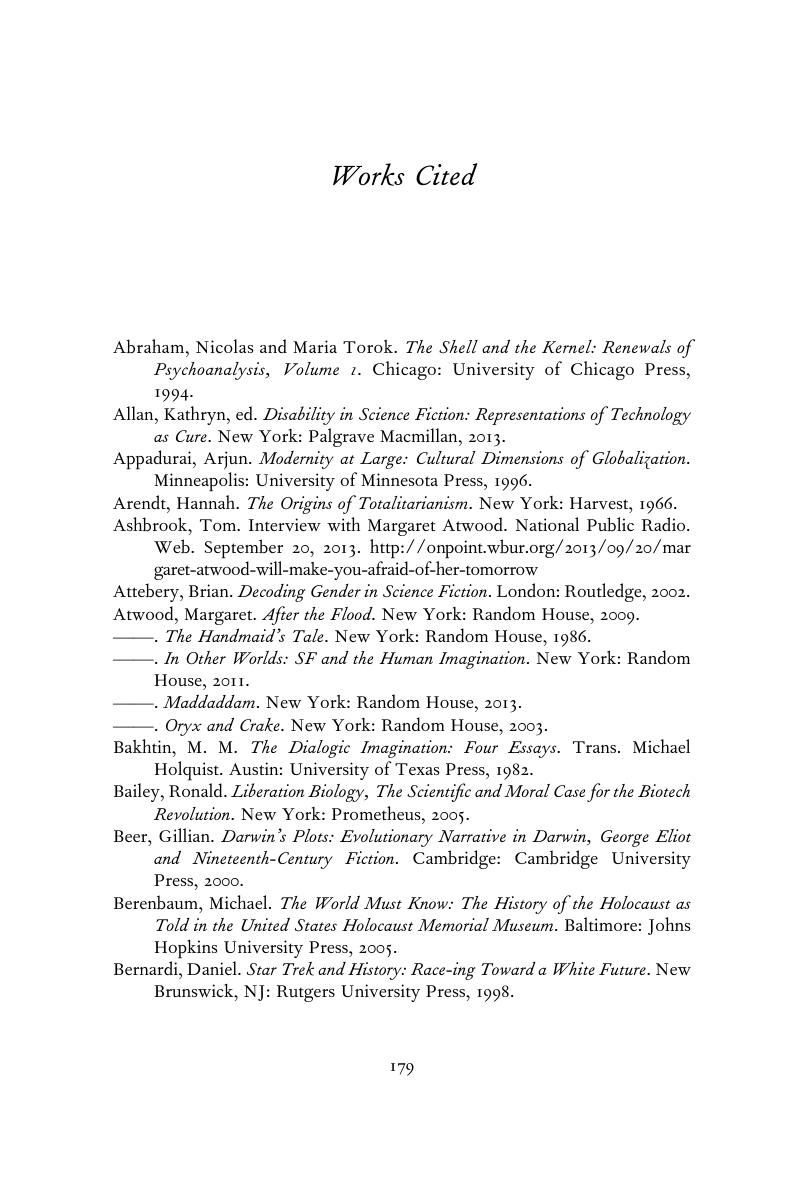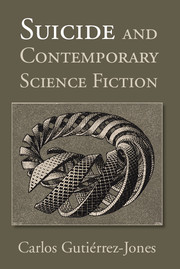Book contents
- Half title page
- Title page
- Copyright page
- Dedication
- Contents
- Book part
- Introduction
- Chapter 1 Living to Wonder
- Chapter 2 Stranded Contacts
- Chapter 3 Stealing Kinship
- Chapter 4 Escaping One’s Self
- Chapter 5 Environmental Adaptation
- Afterword: Creative Self-Destruction and 9/11
- Notes
- Bibliography
- Index
- References
Bibliography
Published online by Cambridge University Press: 05 March 2015
- Half title page
- Title page
- Copyright page
- Dedication
- Contents
- Book part
- Introduction
- Chapter 1 Living to Wonder
- Chapter 2 Stranded Contacts
- Chapter 3 Stealing Kinship
- Chapter 4 Escaping One’s Self
- Chapter 5 Environmental Adaptation
- Afterword: Creative Self-Destruction and 9/11
- Notes
- Bibliography
- Index
- References
Summary

- Type
- Chapter
- Information
- Suicide and Contemporary Science Fiction , pp. 179 - 190Publisher: Cambridge University PressPrint publication year: 2015

